Why Queen Elizabeth was so very fond of America
She was just 25 and still a princess when she and Prince Philip made their first visit to United States in 1951, writes Andrew Buncombe

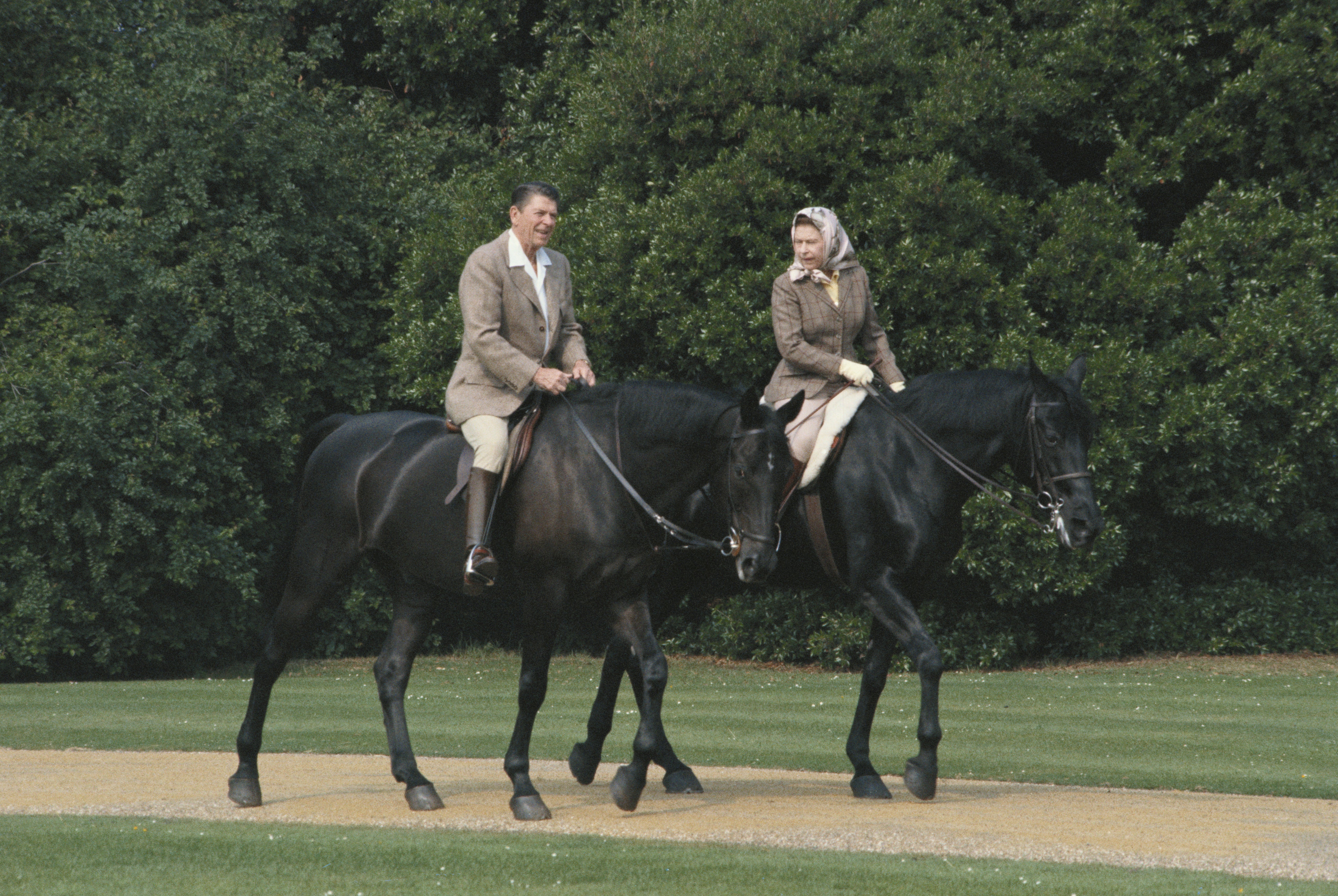
Your support helps us to tell the story
From reproductive rights to climate change to Big Tech, The Independent is on the ground when the story is developing. Whether it's investigating the financials of Elon Musk's pro-Trump PAC or producing our latest documentary, 'The A Word', which shines a light on the American women fighting for reproductive rights, we know how important it is to parse out the facts from the messaging.
At such a critical moment in US history, we need reporters on the ground. Your donation allows us to keep sending journalists to speak to both sides of the story.
The Independent is trusted by Americans across the entire political spectrum. And unlike many other quality news outlets, we choose not to lock Americans out of our reporting and analysis with paywalls. We believe quality journalism should be available to everyone, paid for by those who can afford it.
Your support makes all the difference.She met every sitting US president but one. She stayed with another president, Harry Truman, before she was even the monarch, and met one more, Herbert Hoover, 20 years after he had left office.
Queen Elizabeth II – whose funeral service has been held after she died earlier this month aged 96 after 70 years on the throne – made six official trips to the US, including three state visits with all the pomp and ceremony that involved. She also made a number of private visits, many of them in pursuit of her love of horse racing and the thoroughbreds of Kentucky.
She was just 25 and still a princess when she, and Prince Philip, made her first visit to the United States in 1951, staying with President Truman at Blair House while renovations to the White House were being carried out.
In 1957, she and Philip returned for her first state visit and were met at the White House by President Dwight Eisenhower and his wife Mamie.
He was the first serving president she met during her reign, which began in 1952.
In 2021, the Queen met Joe Biden – whom she had previously spoken to when he was a senator – bringing to 13 the total of presidents in office she met. The only sitting president she did not speak to face to face was Lyndon Johnson.
In one obvious sense, the number of American presidents she met is a striking reminder of the length of her reign. (When Eisenhower was in office, his political counterpart in London was Winston Churchill.)
Latest updates as Queen Elizabeth dies peacefully in Scotland
Supporters and admirers of the Queen say the connections she was able to make helped add personal cement to the relationship between the two countries, almost 250 years after what was a British colony fought for and secured its independence from King George III.
And diplomats from both the US and Britain say London was able to use the Queen’s soft power, and the prospect of a photo opportunity at Buckingham Palace, knowing the allure it held to some, even if they got to meet other heads of state all around the world. (In 2018, the Queen hosted Donald Trump and first lady Melania Trump, even as anti-Trump protesters demonstrated in central London and inflated a balloon that showed the US president wearing a nappy – or diaper).
Elizabeth was just 13 when the Second World War broke out, and she came of age – later serving in the Auxiliary Territorial Service, the women’s branch of the British army – at a time when the US’s importance to Britain, and to its very survival, could not have been more stark.
Historian Robert Hardman, author of a number of books about the monarch including Queen of the World, says her growing up at a time of conflict – she served in the Women’s Land Army – resulted in her seeing the United States as a saviour of sorts for Britain and Europe.
That in turn has helped to shape the way many Americans, particularly admirers of the monarch, view her.
“It was quite well summed up years ago by a Washington journalist based in London: he just said that the Queen, to so many Americans, symbolised stability and permanence in a changing world – characteristics that people find very endearing,” he tells The Independent. “The shared bond of sacrifice, the war, the Second World War in particular, is seen as a big deal in public life.”
He adds: “Generations move on, but the royal family is very much identified with that sort of great transatlantic alliance that – it’s not an exaggeration to say – saved the free world.”
A royal diplomatic carrot
Diplomats from the US and Britain have said the Queen was used frequently to the benefit of both sides, even if any record of the visits of Her Majesty to the US, or a US president to Britain, tend to contain any manner of incidents of “protocol breaches”, as noted by royal watchers.
These included Trump’s walking in front of the Queen, instead of alongside her, and turning his back on her as they reviewed an honour guard, and Michelle Obama’s brief placing of an arm around the Queen’s back as they commiserated with each other about their aching feet.

In 2007, during the Queen’s last visit to the US, George W Bush momentarily mixed up a date of an earlier trip – a 1976 state dinner to mark the bicentennial of the American Revolution – saying she had been there in “17….”. He caught himself before he went any further, and added: “She gave me a look that only a mother could give a child.”
The 1976 visit was also not without note. Gerald Ford threw a dinner at the White House and invited the likes of Cary Grant. Reports suggest all went well until Ford led the Queen to the dance floor, perhaps not aware that the song sounding out through the room was “The Lady Is a Tramp”.
“I think it’s useful on both sides,” says Raymond Seitz, a career diplomat who served as US ambassador to London from 1991 to 1994, the last non-political appointee dispatched by Washington to the Court of St James’s.
“For the British, I think it is useful to see that there is a commonality of interests and history that has more or less worked to the benefit of both countries. Of course, the Queen will do her duty no matter what she thinks of the US president.
“And on the American side, because we tend to be a little rambunctious in our politics, and some of our decision-making, having affirmation from the British, not to mention participation from the British, is always valuable for an American president. So it’s not America going alone.”
Seitz says the US is overwhelmingly a celebrity culture. And because the Queen has been seen in that pigeonhole, few have understood her specific role or the purpose of the Commonwealth.
“There’s this extremely glamorous aspect to the monarchy. And so Americans want to see the changing of the guard at Buckingham Palace,” he says. “And you don’t have to be a descendant of Anglos to like it, you know, Italian Americans go and Black Americans go and it’s just something to see.”
Seitz travelled with the Queen to Texas and Florida in 1991, when George HW Bush was president, and the monarch embarked on a 13-day tour that would include an address to Congress and a visit to the baseball match between the Baltimore Orioles and the Oakland Athletics. (A preview in The New York Times noted that the Queen “will be offered a hot dog but that she does not eat in public”.)
At the White House, she joked about being part of the bicentennial celebrations 15 years earlier.
“With gallant disregard for history, we shared wholeheartedly in the celebrations of the 200th anniversary of the founding of this great nation,” she said.
She told the joint session of Congress: “The concept, so simply described by Abraham Lincoln as ‘government by the people, of the people, for the people’, is fundamental to our two nations. Your Congress and our parliament are the twin pillars of our civilisations and the chief among the many treasures that we have inherited from our predecessors.”
Seitz says the royal visitors drew warm crowds, even if not everyone was certain of who precisely they were.
“In Austin, Texas, the crowds were out, and they were waving little union jacks, and not quite sure who she was, but that she was pretty terrific,” he says. “And I think most people have just a very favourable image of her. And of course, the older she is, the longer she’s there, she’s like everybody’s grandmother.”
Seitz says he spoke to the Queen several times, always at social events.
“She has a very good sense of humour. And she’s very easy to talk to and interested in things and follows up after a conversation,” he adds.
“And she has a charming laugh. She says, when something’s funny, she really enjoys the humour of it. My encounters were always very pleasant. But I never had to talk hard business.”
‘Free men everywhere look towards the United States with affection and with hope’
Elizabeth’s first visit to the US was in October 1951, when the 25-year-old was not yet Queen. She and Philip spent two days in Washington DC, hosted by President Truman and his wife Bess. They had travelled to DC from Canada, where she was also making her first trip.
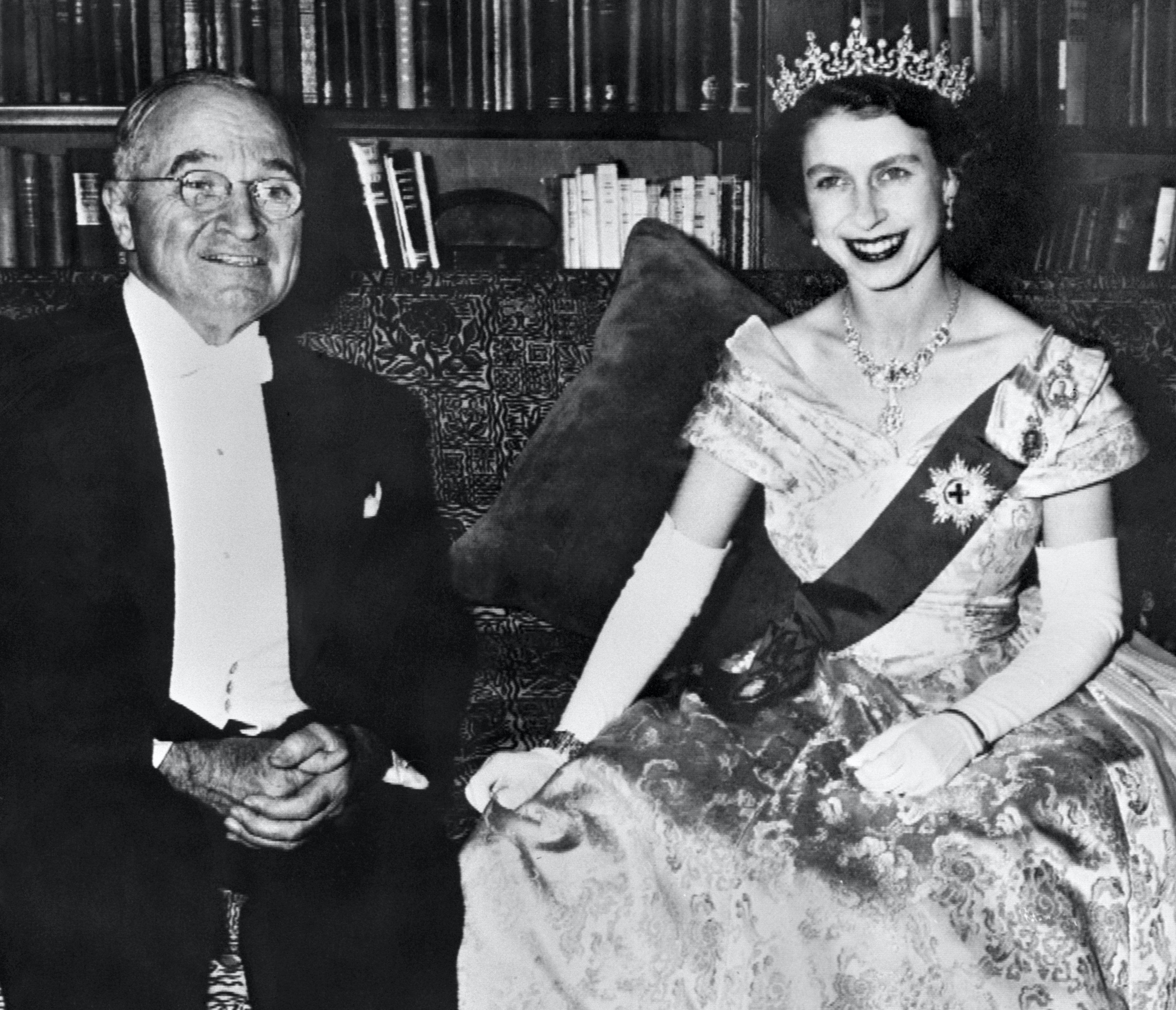
Her father, George VI, was very ill from lung cancer at this point, and he would die just months later, on 6 February 1952, his death at Sandringham Estate setting in motion Elizabeth’s ascent to the throne, and her subsequent coronation in June 1953.
Reports noted Elizabeth gave Truman an elaborate 18th-century “overmantle” to hang above a fireplace in the White House.
Meeting the royal couple at Washington national airport, Truman said: “I think your visit will improve – if that is possible – the cordial relations that exist between our two great countries, and I hope that while you are here you will have a very enjoyable time.”
In response, Elizabeth said during her time in Canada, she heard “much of the warm goodwill felt by the people of the United States towards the people of Canada, and I am glad that before sailing for England we are to have this chance of seeing at least some of the country with which the whole British Commonwealth has so many friendly ties”.
She added: “Free men everywhere look towards the United States with affection and with hope. The message that has gone out from this great capital city has brought hope and courage to a troubled world.”
Later, Truman said that, while he had received many guests in Washington, “never before have we had such a wonderful young couple, who have so completely captured the hearts of all of us”.
A new age of discovery – plus a game of college football
Five years after that first visit to the US, the Queen and Prince Phillip returned for her first state visit, the 31-year-old monarch being met at the White House by President Eisenhower and his wife Mamie. Eisenhower was the first serving president she met during her reign.
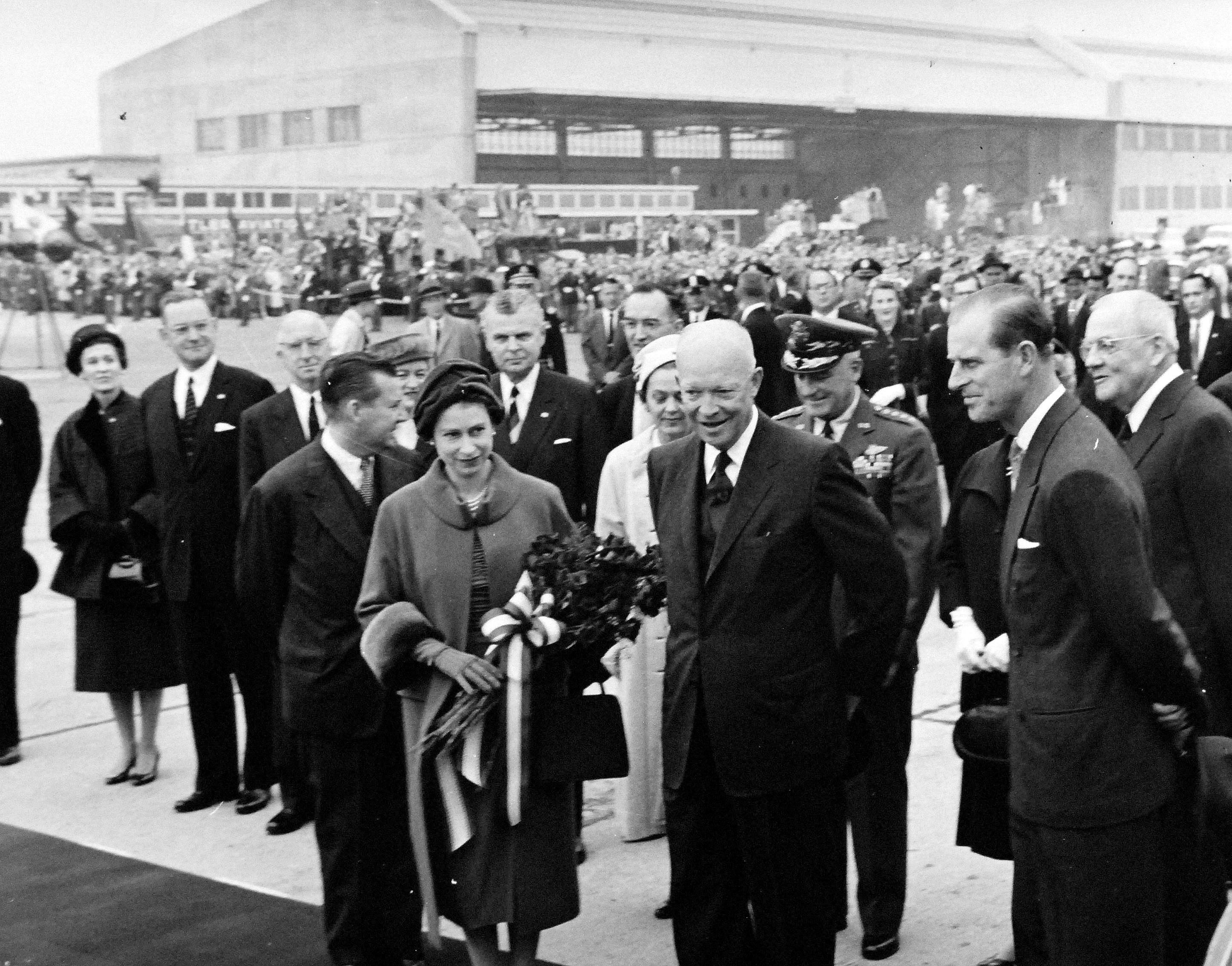
In addition to events in Washington DC and New York, the Queen attended the 350th anniversary of the founding of Jamestown in 1607, the first permanent English settlement in North America. (It was also the site of the first landing of slaves, in 1619, the commencement of more than two centuries of slavery that would continue until the end of the American civil war in 1865.)
The Queen received a 21-gun salute and was welcomed at Jamestown by Virginia governor Thomas Stanley.
According to a report in the Richmond Times Dispatch, Elizabeth said in her remarks: “I cannot think of a more appropriate point for us to start our visit to the United States.”
She added: “The settlement in Jamestown was the beginning of a series of overseas settlements made throughout the world by British pioneers. Jamestown grew and became the United States. Those other settlements grew and became nations now united in our great Commonwealth.”
The Queen visited an exhibit of the settlement and had tea at the College of William and Mary, and attended a religious service in the Old Tower Church on Jamestown island. She and Philip would spend two nights at the Williamsburg Inn.
To bring the Queen to Washington, Eisenhower had sent his official aircraft, the Columbine III, to Patrick Henry airport in Newport News.
At a state dinner at the White House, the Queen said; “There are many indications today that we are at the beginning of a new age of discovery and exploration in the world of human knowledge and technology. Only a short time ago these unexplored areas of human knowledge seemed as impenetrable as the forests of this continent to the settlers 350 years ago.”
Her visit also took in a college football match, watching the Maryland Terrapins beat the North Carolina Tar Heels 21-7, at the University of Maryland, on the outskirts of Washington DC.
The Queen left for New York, where she addressed a meeting of the United Nations General Assembly.
She said: “This assembly was born of the endeavours of countless men and women from different nations who, over the centuries, have pursued the aims of the preservation of peace between nations, equality of justice for all before the law and the right of the peoples of the world to live their lives in freedom and security.”
She would not return to the US on an official basis until 1976 when she travelled to see Gerald Ford for the bicentennial celebration, an event that was also a state visit. She made official trips, though not state visits, in 1983 when she visited President Ronald Reagan, 1991 when she met President George HW Bush, and 2007 when she returned for the 400th anniversary of the English settlement in Jamestown
‘The only absolutely central item in president’s visit is this riding event’
Perhaps the most telling insight of the Queen’s power as a diplomatic tool with the wrapping of pageantry came during the presidency of Ronald Reagan, who served two terms, and visited London in June 1982 while the Falklands conflict was still going on.
The British government, led by Prime Minister Margaret Thatcher, was concerned to ensure the US’s support in a critical UN vote over the Falklands. The visit by Reagan was the first by a president for five years, but the invitation from the Queen – rather than the government – was the first of its kind since one made to Woodrow Wilson in 1919.
Reagan also had to juggle a one-day trip to the Vatican to visit the Pope, an economic summit in Paris, and the fallout from the British media again finding fault with a breach of protocol. (First lady Nancy shook hands and did not curtsy, triggering a series of hard stories.)
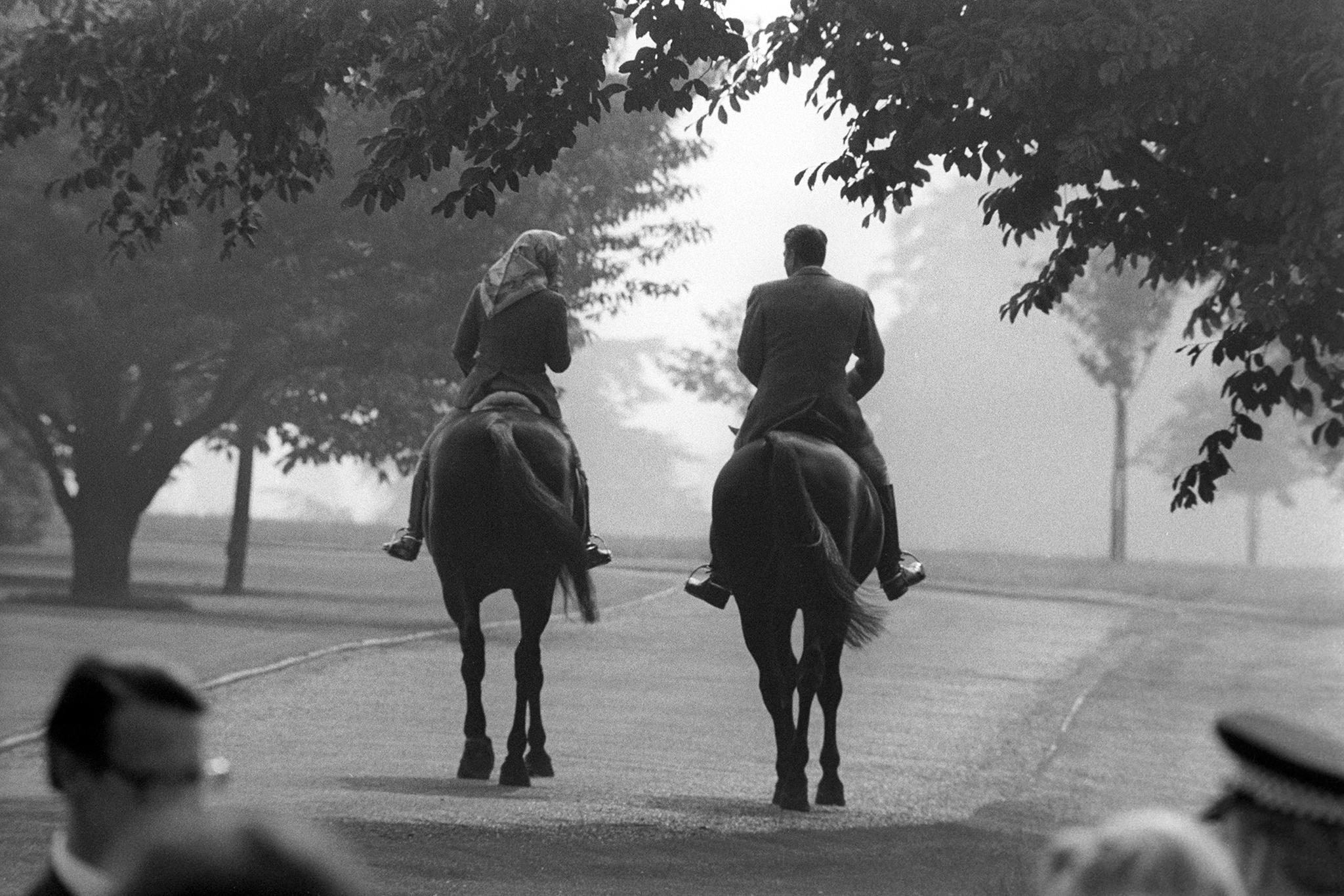
Reagan was also the first US president to address the Houses of Parliament.
Yet, documents obtained by the historian Hardman under a freedom of information request show the importance Reagan attached to an invitation from the Queen to ride with her at Windsor.
“Mrs Thatcher had worked very hard to bring Ronald Reagan onside in the conflict, despite the reluctance of some American strategists for whom Argentina served as a bulwark against the spread of communism in South America,” Hardman writes in Queen of Our Times.
Documents show Sir Nico Henderson, the British ambassador to Washington, reporting to London: “I need hardly say that the only absolutely stable and central item in any discussion of the president’s visit is this riding event.”
The ride, which lasted an hour around the Windsor estate, went off without a hitch, despite being “pursued by US Secret Service outriders in a state of near panic”.
Reagan wrote in his diaries that day: “Flew out for London and helicoptered to Windsor Castle. This was a fairy tale experience.”
A year later, Reagan returned the compliment, inviting the Queen to ride with him at his ranch in California, an offer he did not make to any other head of state.
Hardman says reading the documents it becomes clear that this was the “personal magic, which really matters to the most powerful man in the world at the time when Britain really needs his help”.
‘She’s enjoyed discussing horse breeding and meeting the people who run these farms’
In addition to the six official visits to the US, the Queen made several private visits and in particular was drawn to the bluegrass state of Kentucky. There she pursued her fondness for horse racing.
Her first visit came in October 1984, to celebrate the inauguration of a race named in her honour, the Elizabeth II Challenge Cup Stakes, held at Keeneland, Lexington. The first race’s winner was Sintra, a Kentucky-bred horse.
Seth Hancock, one of the half-owners of the horse, told a reporter from the Lexington Courier-Journal: “The queen’s a regular person, just like my mother and all the other classy ladies I’ve known in my life.”
The other half-owner, Renee Lickle, confessed to being more starstruck. “My hands were shaking so hard I couldn’t even hold my binoculars straight.”
She returned in 1986 and 1989, for what officials said was a “working holiday” with few if any public appearances.
The Queen is said to have stayed at Lane’s End, a farm in Versailles, west of Lexington, owned by her friend William Farish and where she stabled horses. Farish met Prince Charles while playing polo and was introduced to the Queen at a match she sponsored in England. Farish would later serve as US ambassador to London.
British embassy spokesman Francis Cornish told reporters at the time that the Queen was returning to Kentucky because there was no match for its status as a centre of horse breeding, and she had “thoroughly enjoyed herself” during her previous two visits.
“She’s enjoyed seeing the stallions,” Cornish said. “She’s enjoyed discussing horse breeding and she’s very much enjoyed meeting the people who run these farms and own these farms.”
The Queen returned twice more to Kentucky, in 1991, as the “unofficial” part of her official visit, and in May 2007 when she and Philip attended the 133rd Kentucky Derby at Churchill Downs.
Former Buckingham Palace press secretary Dickie Arbiter told the WLKY television channel that year: “There are those ... who would probably say that she likes animals a little more than she likes people. And I suppose it can be argued that the animals are always pleased to see you and they don’t argue back.”
‘For many Americans it’s amazing she was Queen when Winston Churchill was prime minister’
The Queen’s last official visit to the United States was in May 2007 when she travelled to mark the 400th anniversary of the Jamestown settlement, near Williamsburg, Virginia.
She was welcomed at the White House by George W Bush, and at the British embassy in Washington DC by the ambassador Sir David Manning. In his role as Britain’s envoy, Sir David accompanied the Queen’s party.
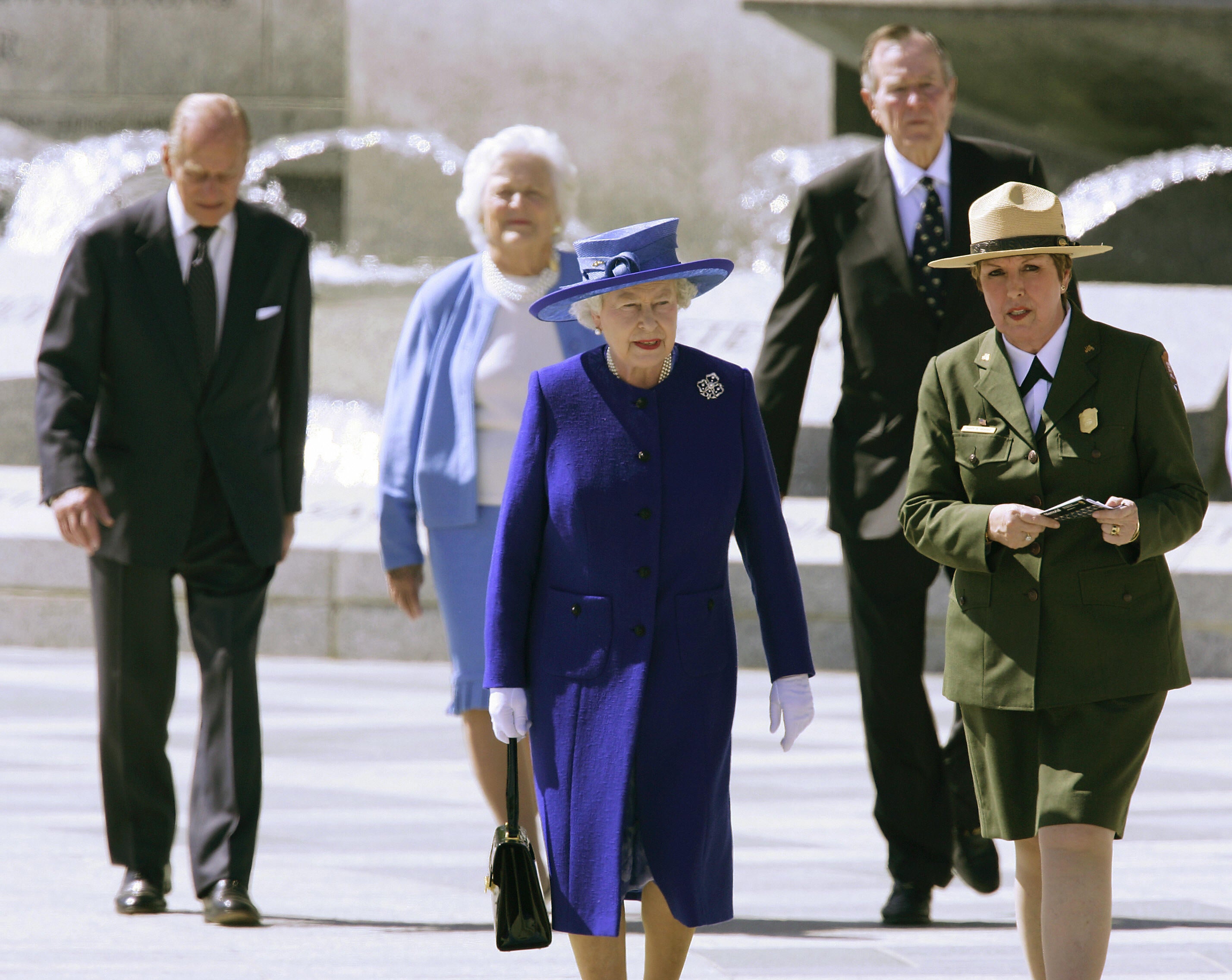
He believes the Queen’s admiration for the US was largely mutual.
“The affection for her was very clear when she came to the United States on her last state visit in 2007,” he says from London.
“And the one in 2007, in some ways, reprised the very first one because she arrived in Jamestown, and then went to Williamsburg. And when she stayed in Williamsburg, she stayed in a hotel that had wonderful photographs of her from the very first time in 1957.”
Sir David points out that the Queen met every US president who served during her reign bar Lyndon Johnson.
“And it was a source of fascination and amazement to many Americans that this was somebody who first came to the throne when Winston Churchill was the British prime minister,” he says. “And Churchill, as we all know very well, is a cult figure in the United States.”
He adds that for many Americans there was a sense of history about her, a link that goes right back to those days of Eisenhower and Churchill. “She, I think, is also enormously admired as being someone who lived through the Second World War.”
Sir David says during their time in Washington DC, the Queen and Prince Philip visited the then recently new World War II Memorial. They toured it, not with Bush but Bush’s father, George HW Bush, and former first lady Barbara Bush.
“This was a very moving event because all of them had lived through the war. There was Prince Philip, who had been on destroyers, and the Queen had been in the [Women’s] Land Army, and President Bush had been a fighter pilot,” he says.
“And I think this all has great resonance for Americans. And so I think there is a fascination and attachment.”
Sir David also spent 10 years as an adviser to the Duke and Duchess of Cambridge (William and Kate), and the Duke and Duchess of Sussex (Harry and Meghan).
In March 2021, Meghan and Harry delivered a withering account of the palace in an interview with Oprah Winfrey, accusing it of racism and officials of ignoring the couple’s appeal for help with their mental wellbeing.
Does Sir David believe events like that, or allegations made against her second son Prince Andrew in lawsuits filed in New York of sexual assault – claims he denied but which the Queen helped him to financially settle – tarnished her reputation?
He says that now he is living outside the US, it is impossible for him to say. However, he doubts it.
“Maybe other members of the family come up and come down, and they’re less or more popular, but I think the Queen is in a rather special category of her own, probably,” he says.
“I doubt whether the assessment of her is much affected by what the rest of the family do.”
He says that the controversy over Meghan and Harry is, of course, part of her reign, but doubts “it will much impact on how she was viewed from the United States”.
He says that she was “championing the Commonwealth, she’s champion decolonisation, she’s obviously absolutely happy in the company of all sorts of leaders from all around the world, and what’s more, she knows them all very well, I think that is much more the image Americans are likely to take away”.
Final visit and a ‘vision in champagne’
During the six-day state visit in 2007, the staff at the Williamsburg Inn had set out photographs of the Queen, from her first visit 40 years earlier. The Inn has a long history of welcoming heads of state and government, and VIPs, among them the late Margaret Thatcher, who in 1993 was made chancellor of the College of William and Mary, located in Williamsburg.
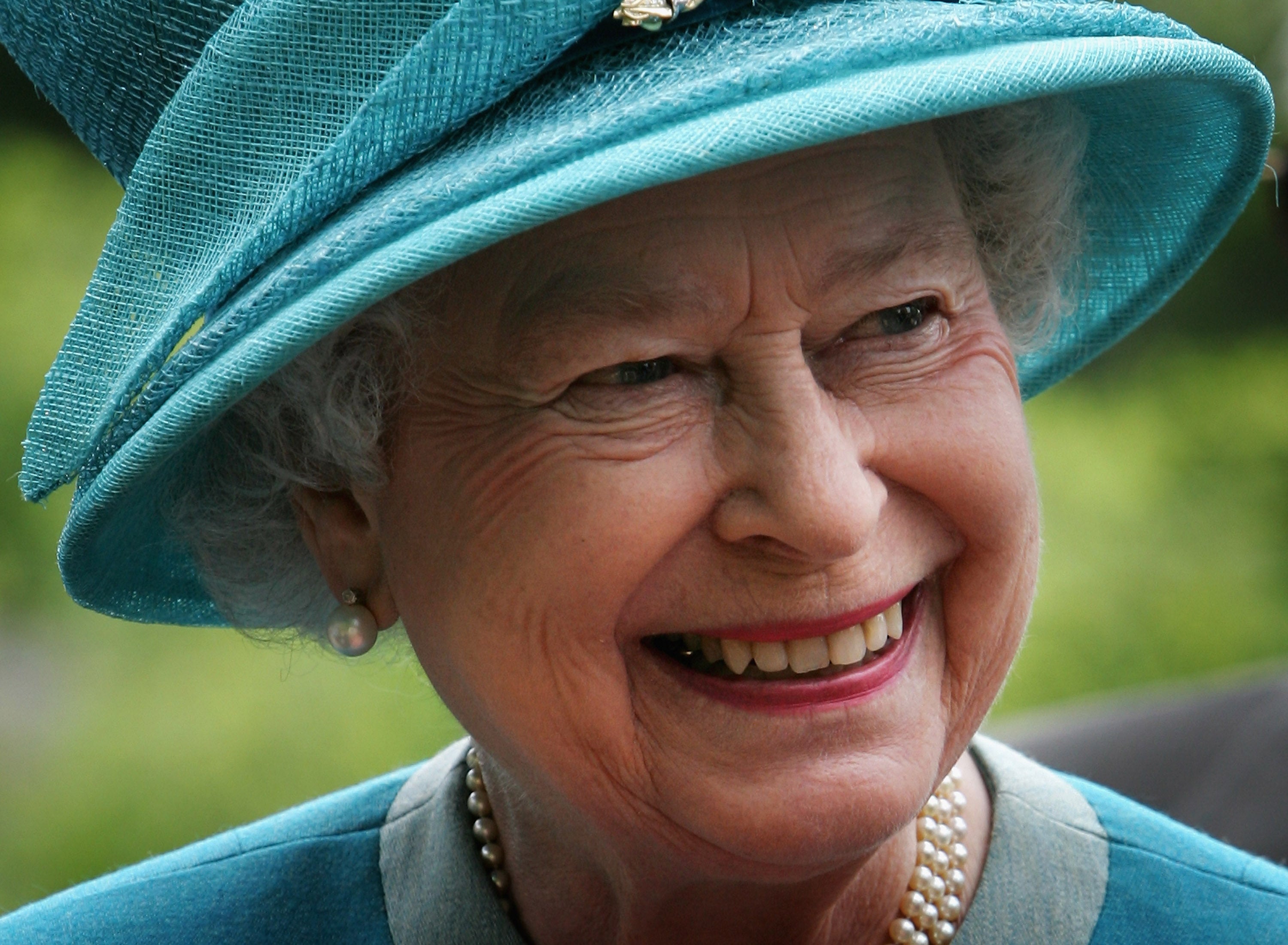
Leslie Noble, the general manager, recalls her visit as one that was very warm and says that for many staff, the Queen’s visit would have been special, particularly given she was coming to celebrate 400 years since the founding of Jamestown.
Noble was supposed to have been in the farewell line that sent her off but because of a mix-up, she and her staff were sent out to wave at her departing helicopter.
“I was so impressed by her composure with this crowd in the lobby. How kind she was to the two little girls that gave the flowers,” she says, speaking from Williamsburg.
“She was only here less than 24 hours. But I watched her go up and down the staircase to her suite numerous times. Travelling up the steps like it was nothing, and these high-heeled shoes, and just the energy she had, even in her eighties.
“And I thought how remarkable she was, always seemed so composed and so friendly, smiling to people, even as she was heading back to her room to change for the next event that she had,” she adds.
Noble recalls that ahead of her visit, the Inn had been contacted by the Queen’s senior dresser, Angela Kelly, whose formal title is personal adviser to Her Majesty (The Queen’s Wardrobe).
She says Kelly told her the Queen had described her 1957 visit in such detail that she felt she had visited the Inn herself, even though at that point she had not.
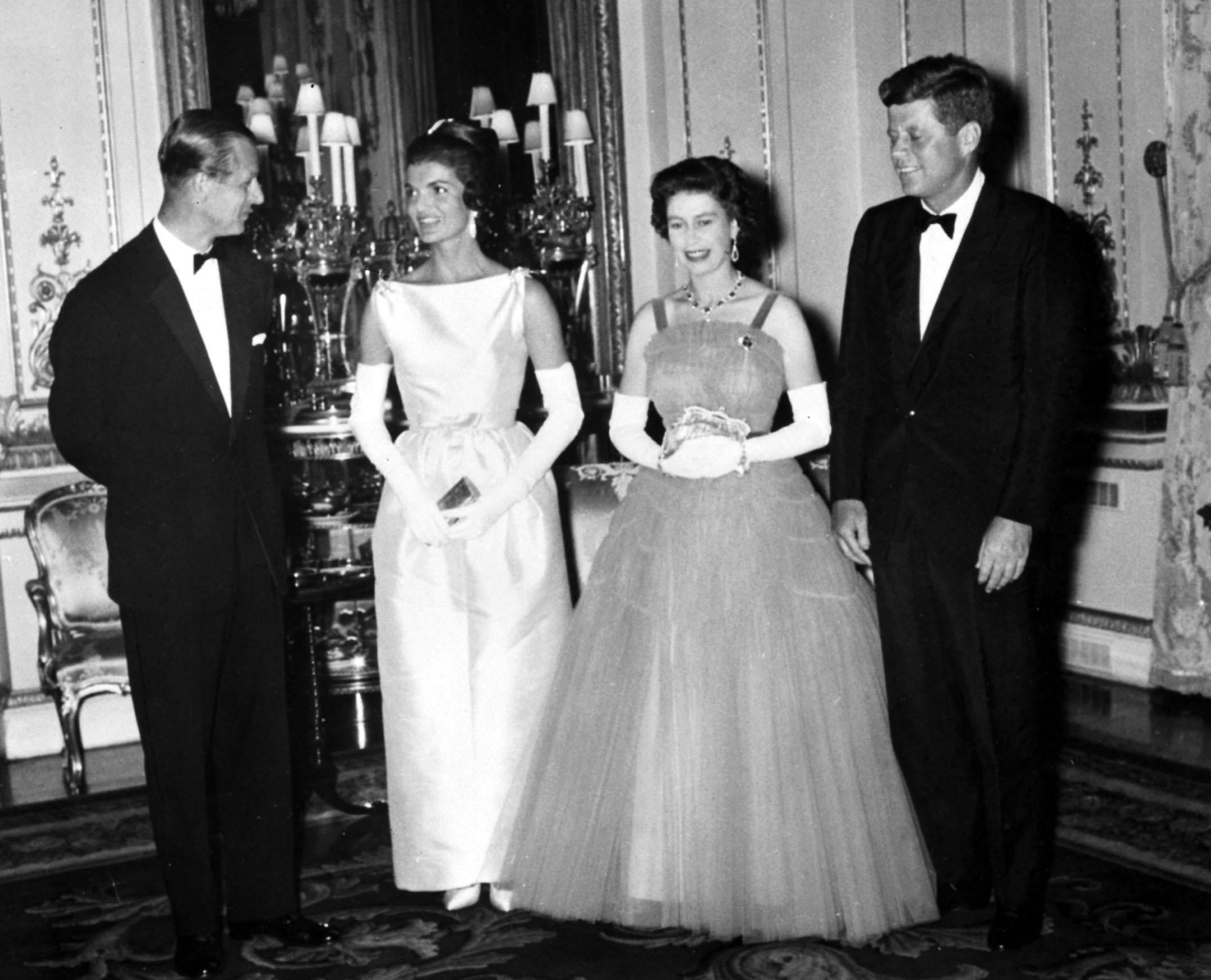
The monarch had even remembered the gown she wore, though not its colour, as she had that item in two particular tones – blue and beige. Most photographs from the time were black and white.
Nat Reed, the Inn’s former superintendent of guest services, had worked during the Queen’s first visit, and retired in 1984.
During the time of the Queen’s second visit, Reed was in his nineties, but his memory was also sharp. (Reed died in 2009, aged 93, and his story in the Richmond Times was headlined “Nathaniel Reid, who served royalty at Williamsburg Inn, dies at 93”.)
“When asked about the colour of the gown – and they didn’t give him a choice – he just immediately said ‘she was a vision in champagne’,” says Noble.
“So she did remember her time with us and remembers that enough that she described it 50 years later in such detail, even the gown.”
Noble adds: “The fact that she remembered meant so much to us. To think with everything that she had seen and done in 50 years, she had enough of a memory of us.”




Join our commenting forum
Join thought-provoking conversations, follow other Independent readers and see their replies
Comments